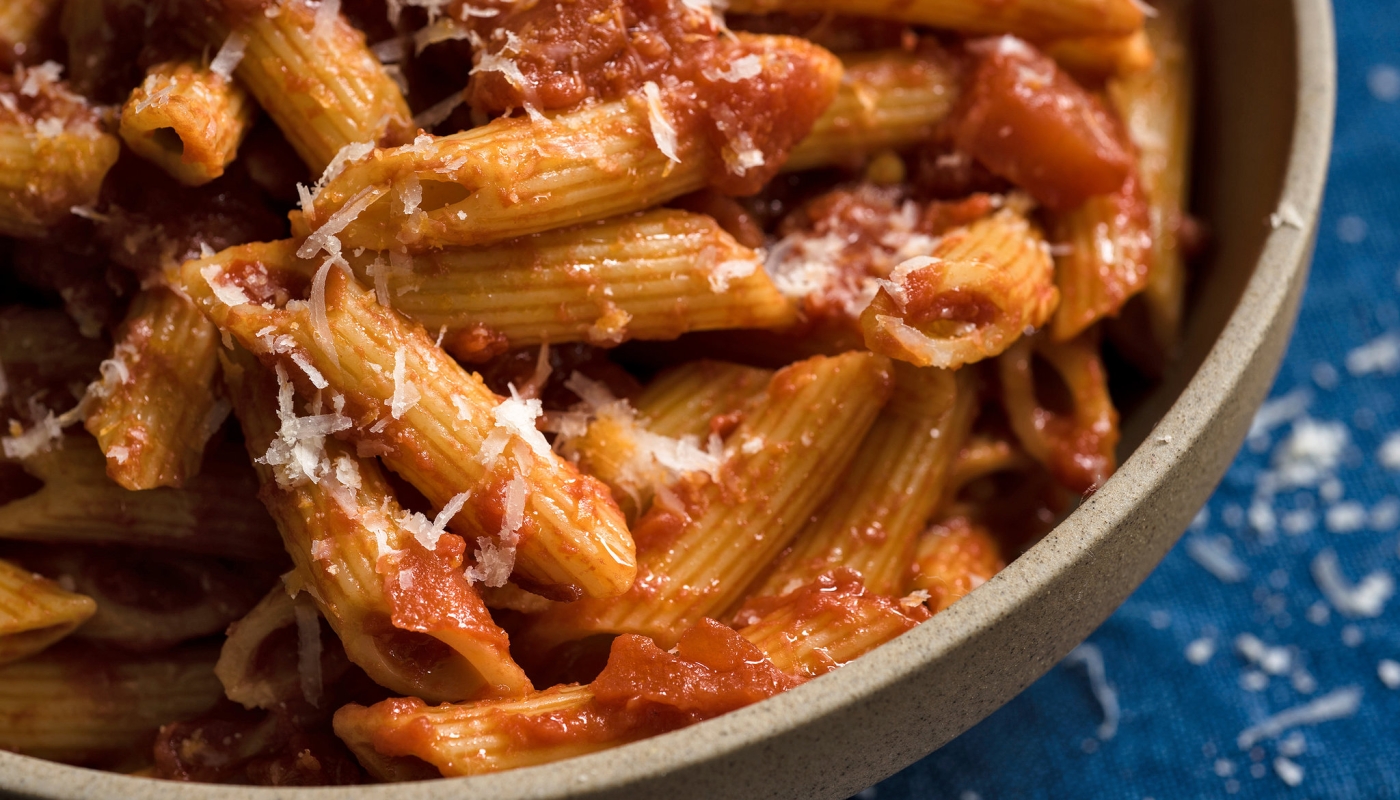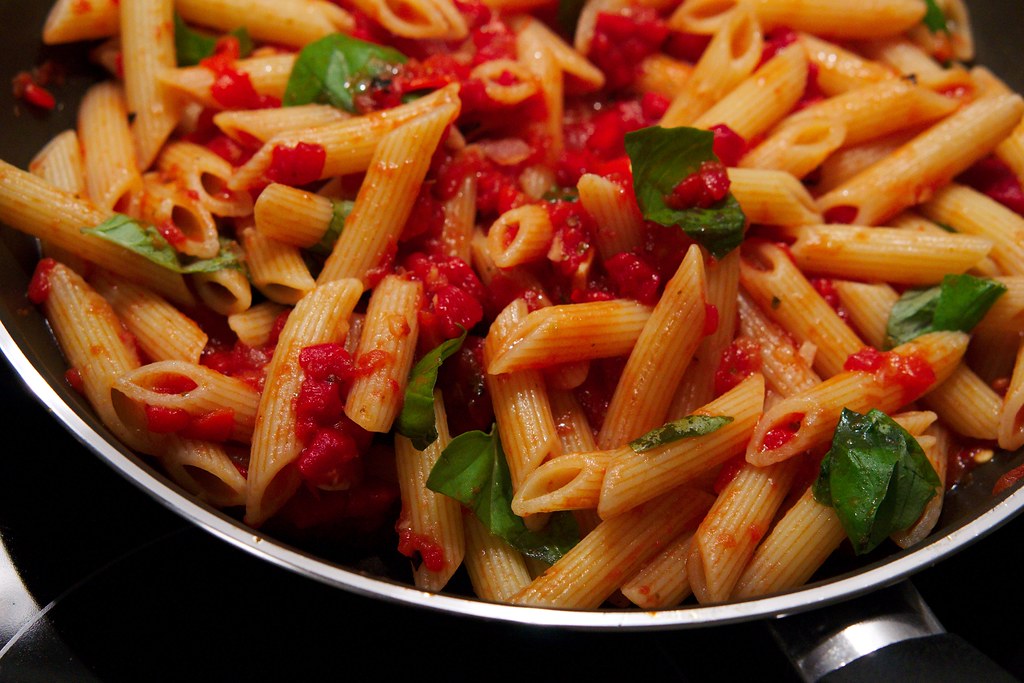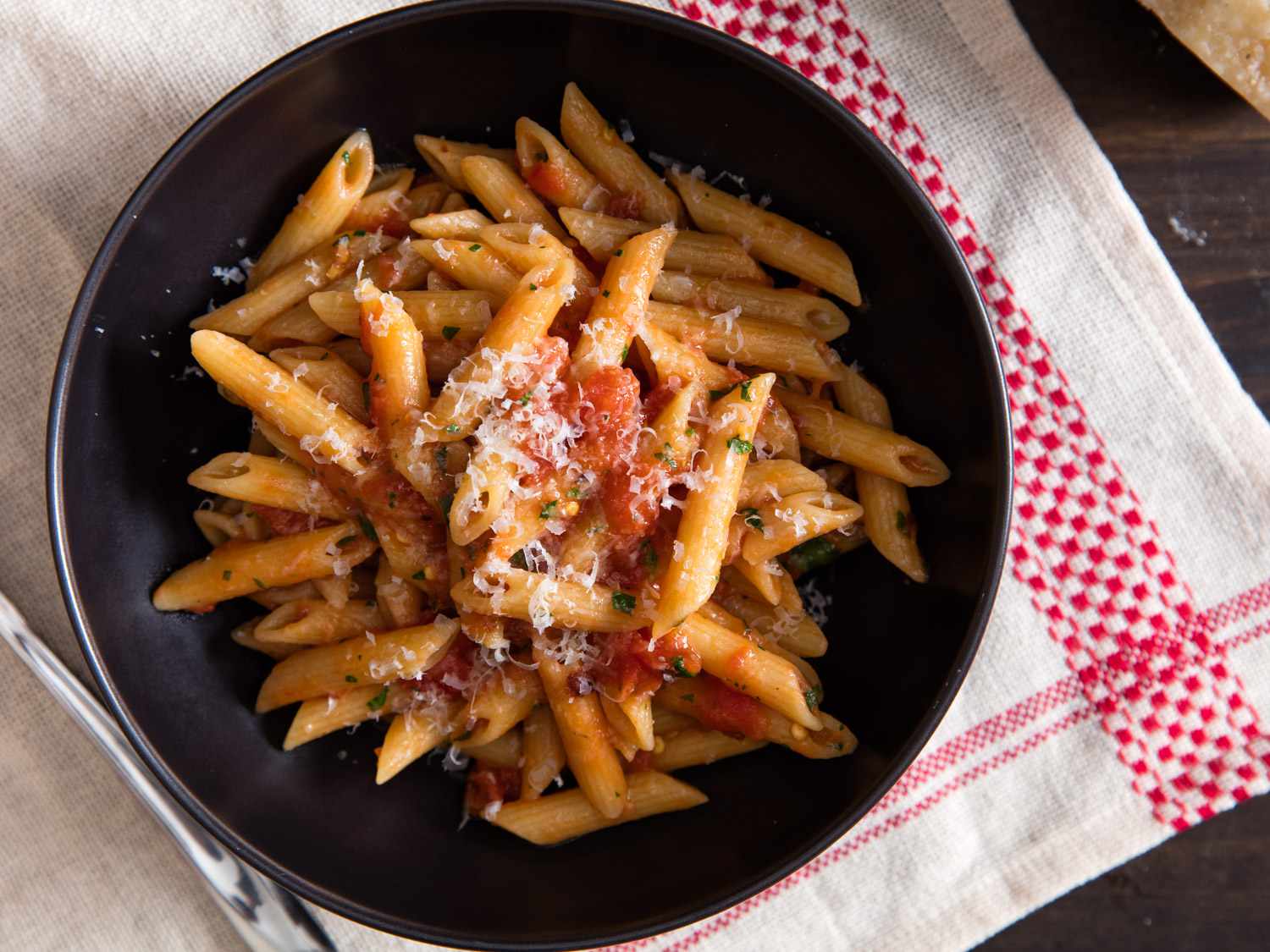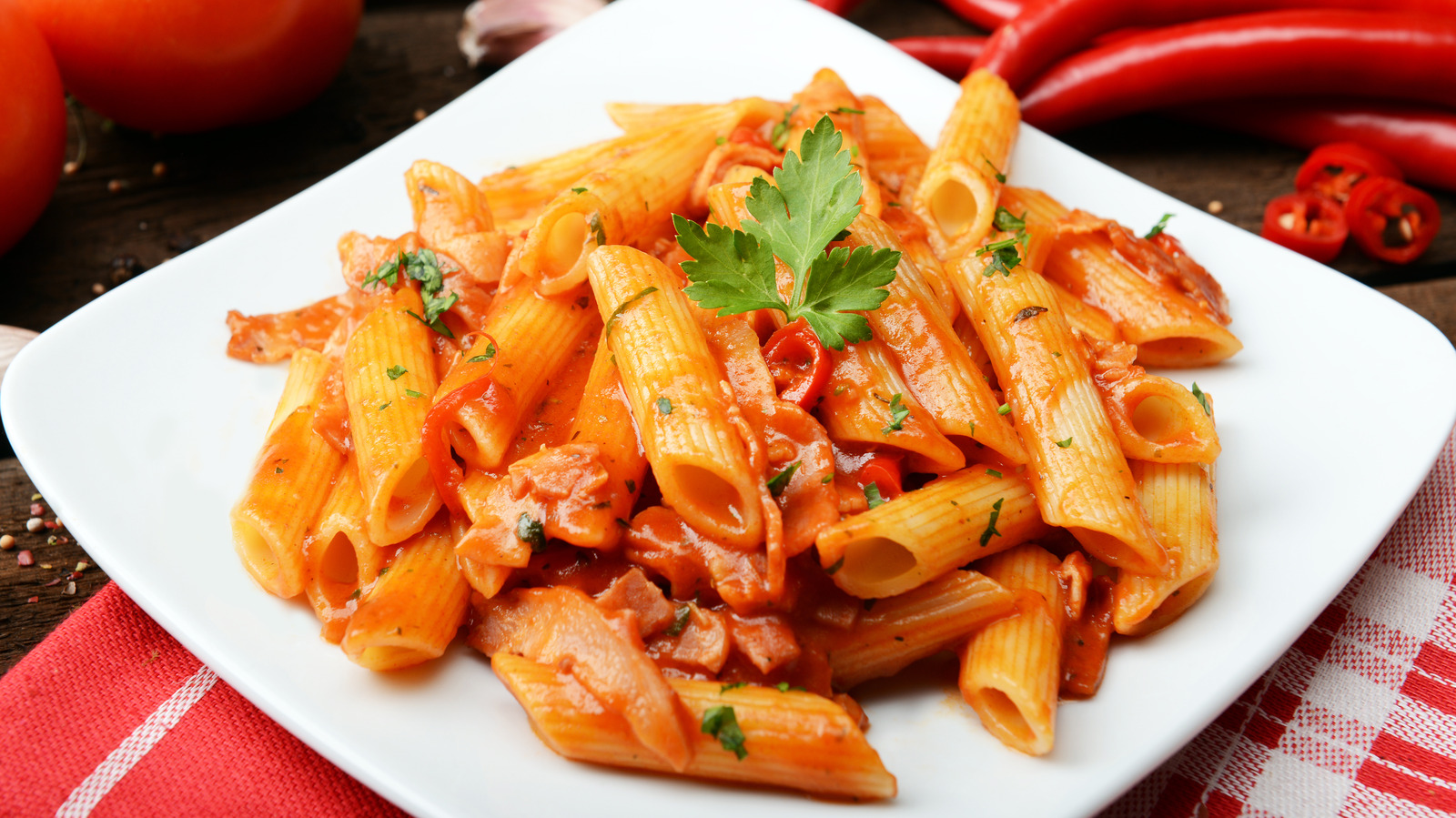Pasta Arrabbiata: A Spicy and Delicious Italian Dish with Authentic Flavor

Pasta is one of the most beloved Italian dishes worldwide, with countless fans everywhere. One of the most famous and tasty versions of pasta is Pasta Arrabbiata. The word "Arrabbiata" in Italian means "angry," referring to the dish's spicy and fiery taste. This classic spicy sauce, originating from the Rome region, is made from a simple combination of garlic, tomatoes, and chili peppers. This warm and zesty blend gives the pasta a rich and exciting flavor.
The Wide Variety of Pasta for Different Diets
In recent years, the popularity of pasta has grown significantly, leading to the creation of various recipes that cater to different tastes and dietary needs. Among these adaptations are vegan recipes that cater to those avoiding meat and animal products. For instance, pasta pesto is a popular option that excludes animal products.
Pasta is a staple in the menus of restaurants and cafes worldwide, demonstrating its widespread appeal. Learning how to cook various types of pasta can be both an enjoyable culinary skill and a profitable business opportunity.

Ingredients for Making Pasta Arrabbiata
To prepare this delicious dish, you’ll need the following ingredients:
- Parmesan Cheese: 2 tablespoons (for final garnish)
- Tomato Puree: 1 cup (for a rich and flavorful sauce)
- Salt: 2 teaspoons (to season)
- Penne Pasta: 300 grams (or any pasta of your choice)
- Basil: 30 grams (preferably fresh and chopped for added aroma)
- Garlic: 2 cloves (chopped and sautéed)
- Chili Peppers: 2 (chopped for the desired spiciness)
- Olive Oil: 2 tablespoons (for sautéing and adding mild flavor)
- Tomato Paste: 1 tablespoon (to enhance color and thickness of the sauce)
Steps to Prepare Pasta Arrabbiata
- Cook the Pasta: Boil the pasta in salted water for about 10 minutes until it reaches the desired texture. Drain and set aside.
- Sauté the Garlic: In a large pot or pan, sauté the garlic in olive oil over low heat until it releases its aroma and turns golden.
- Add the Chili Peppers: Add the chopped chili peppers to the garlic and sauté for a few more minutes to infuse the oil with spiciness.
- Add Tomatoes and Paste: Stir in the tomato puree, tomato paste, and salt. Let the ingredients cook together until the sauce thickens.
- Combine the Pasta with the Sauce: Add the cooked pasta to the sauce and stir gently to coat the pasta evenly.
- Finish with Basil and Parmesan: Finally, add the chopped basil and Parmesan cheese, mixing everything well. Your Pasta Arrabbiata is now ready to be served.

The History and Fun Facts About Pasta
Pasta has a rich and long history, with many stories surrounding its origins and development. Here are five interesting facts about pasta that you might not know:
- The Introduction of Tomatoes to Pasta: Originally, pasta was consumed without tomatoes or sauce. This remained the case until tomatoes were brought to Europe by Hernán Cortés from Mexico. Once introduced, the delicious combination of tomatoes with pasta quickly became popular, making tomato sauce a staple ingredient.
- The First Introduction of Pasta to America: Interestingly, Thomas Jefferson, the third President of the United States, was the one who introduced pasta to America. He discovered it during a trip to Italy and then brought it back to his country.
- The Diversity of Pasta Types: There are more than 600 different types of pasta around the world. These variations come in different shapes, sizes, and even nutritional values. Some types of pasta are even believed to aid in weight management due to their specific carbohydrate content.
- Popular Pasta in America: According to a survey conducted in 2013, the top three favorite types of pasta in America are spaghetti, penne, and rotini.
- The True Origin of Pasta: Contrary to popular belief, the origins of pasta are not exclusively Italian. Evidence suggests that as far back as 5000 years ago in China, similar noodle-like strands were used as a staple food.

Pasta: A Dish Beyond Borders
Pasta, a symbol of Italian cuisine, is now recognized and enjoyed worldwide. Due to its versatility in preparation and ability to cater to different palates, pasta is cooked in diverse ways across various cultures. Given its popularity, if you’re looking to learn a culinary skill that’s both enjoyable and profitable, mastering different pasta dishes is one of the best options. This dish can become a staple in your personal or professional menu, and with a touch of creativity, it can even be turned into a culinary masterpiece.
Now that you have a complete guide to Pasta Arrabbiata and some interesting history about pasta, it’s time to head to the kitchen and prepare this delightful and exciting dish. Good luck and enjoy your meal!
